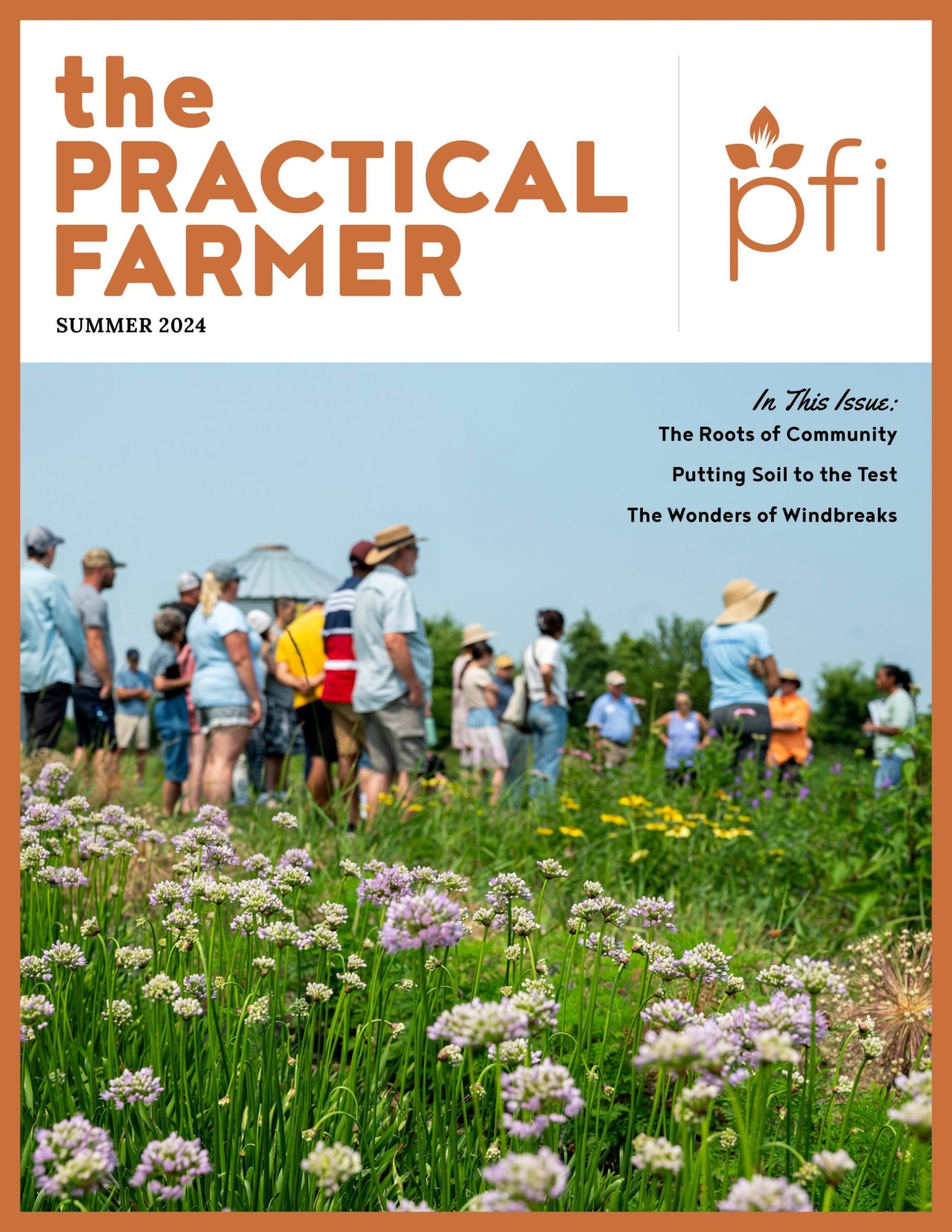the Practical Farmer: Summer 2024
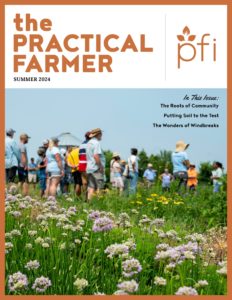 Table of Contents
Table of Contents
On the cover:
PFI’s 2024 field day season is in full swing! Find a few events to attend over the summer, learn something new and meet other attendees. The cover depicts a field day from July 16, 2023, at Hannah Scates Kettler and Kurtis Kettler’s farm, Minerva Meadows, near State Center.
 Livestock
Livestock
Oh, for a Bee’s Experience
Even as honeybees face more serious threats to their survival in Iowa, the beekeepers who tend them find purpose and joy in bloom.
 Horticulture
Horticulture
Moving the Feast
In 2023, a team of farmers and community advocates tested mobile markets as a way to help low-income seniors access fresh, local food.
 Beginning Farmers
Beginning Farmers
Picking Up Rocks
For one group of young future farmers, care for land and community is one of many lessons learned from their farm upbringing.
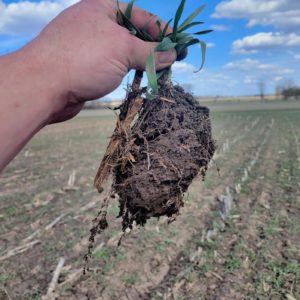 Field Crops
Field Crops
The Roots of Nitrogen
From cover crops to cost-share, PFI farmers are working to build soil health and reduce inputs in hopes of stabilizing nutrient cycles – and farm economics.
 PFI Leaders
PFI Leaders
Funding Resilience
Robust funding streams are helping farmers achieve their goals.
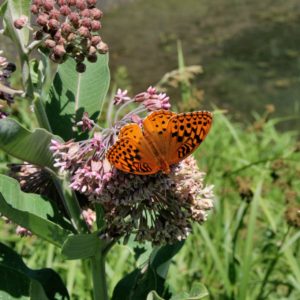 Habitat
Habitat
Sharing the Space
As urban zones expand, preserving pockets of pollinator habitat is paramount.
PFI Leaders
Make This Garden Grow
Steve and Ethy Cannon have transformed a formerly barren plot into a community garden space.
PFI News
Meet the Newest Members of PFI’s Team
Grants Manager
Field Crops Outreach Coordinator
Senior Cover Crop Business Coordinator
Business Viability Manager
Field Crops Outreach Coordinator
2023 PFI On-Farm Research Features Roll-Crimping Cover Crops
A roller-crimper presents the opportunity to mechanically terminate cover crops with less herbicides or tillage by simultaneously laying the cover crop flat on the ground and crushing the stem. Determining when and how is best to use roller-crimpers has been a subject of interest in PFI’s Cooperators’ Program for the past seven years. In 2023, five cooperators conducted on-farm research on roll-crimping a cereal rye cover crop ahead of soybeans.
In one project, Fred Abels, Jon Bakehouse, Keith Gorham and Kevin Veenstra investigated roll-crimping a cereal rye cover crop at two stages in the rye’s development: anthesis (flowering) in late May and grain-fill approximately seven to 14 days later.
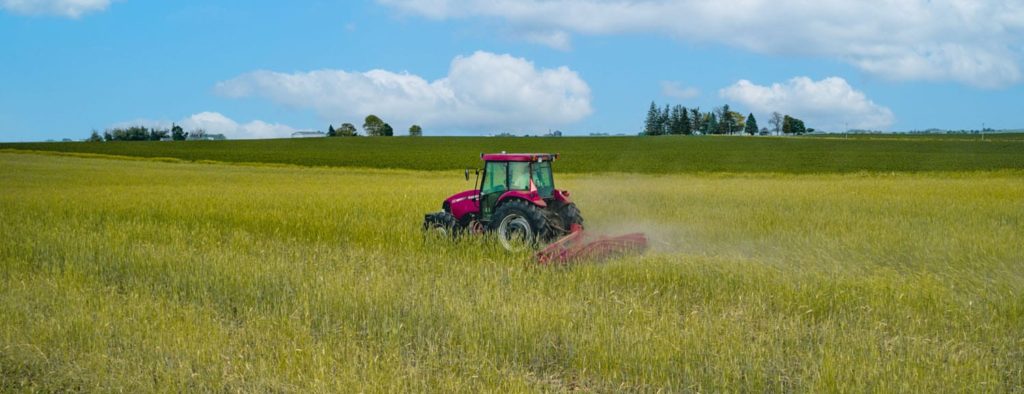
Fred Abels using his roller-crimper to terminate cereal rye at grain fill. Photo taken June 14, 2023 by Brady Appel.
In both cases, soybeans were no-till drilled into the rye cover crop prior to roll-crimping. None of the four cooperators found that roll-crimp timing significantly affected soybean yields. Kevin feels that the “results let me open up a bigger window for crimping.”
In another project, Michael Vittetoe tested how roll-crimping a cereal rye cover crop at boot stage and then chemically terminating it shortly after affects soybean yield compared to chemically terminating the cover just after boot stage and letting the rye stand while partially shading the young beans.

Michael Vittetoe’s in-row roll-crimper in action crimping rye with undisturbed soybean rows in between the rollers. Michael seeded a cover crop in 10-in. twin-rows on 30-in. centers so that he can plant soybeans between cover crop rows. Photo taken May 16, 2023.
Michael found that soybeans in his roll-crimped system out-yielded the system where he left the rye standing. The yield advantage was also enough to pay for the extra pass of the roll-crimping. Michael is glad he did this trial because “it is helpful to have the more detailed analysis of yield differences, etc. to help make decisions moving forward.”

